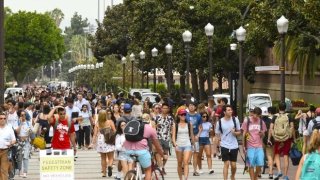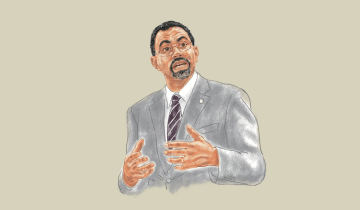For homeless college students, the Covid-19 pandemic has exacerbated an escalating crisis.
In California, there are several factors at play: the high costs of higher education; increased housing insecurity caused by an economic downturn; and reduced housing capacity at many of the state’s colleges and universities.
Cost of living is also contributing to the housing crunch. In urban areas such as Berkeley, home to a prominent University of California campus, 40% of the university’s students cannot afford to live in the city due to high rents and limited housing supply.
With nowhere to go, more students are seeking refuge in their cars or sleeping on the street.
Impacts of Student Homelessness on Higher Education
The most harmful effects of student homelessness are personal. Compared to their peers, homeless college students experience higher levels of anxiety and poorer physical health, and have less access to nutritional food.
But housing insecurity impacts institutions as well. Homeless students report lower GPAs, are less likely to persist in their studies and drop out at higher rates than their peers, according to a report by the UCLA Center for the Transformation of Schools.
Dropping out is a lose-lose scenario. It hurts students’ careers and earnings potential, and institutions lose valuable tuition dollars.
You may also be interested in:
- Scholar’s research into homelessness finds flawed supports for students
- EDL alumna founds new school that serves students impacted by homelessness
A Spreading Crisis
Historically, lower-income students have struggled most with homelessness. However, in recent years the homeless population has expanded. Middle-income students who would otherwise be more financially secure are struggling to cope with the costs of higher education.
The crisis is also affecting more kinds of institutions. In the past, those attending community college have reported the highest rates of homelessness. But in a 2020 survey, possibly because of the pandemic, housing insecurity was 14% at both two- and four-year institutions. (In California, the number for community college students is likely higher.)
The majority of affected students are Black, Latinx and American Indian, according to the UCLA report, which studied public university systems in California.
What Can Institutions Do to Help?
Nationwide, institutions have adopted different tactics to temper student homelessness. Some have sought creative solutions, such as protected parking lots for students living in their cars. Others have formed partnerships with community nonprofits that provide financial and housing assistance. However, given the scale and complexity of the problem, there is no one magic bullet solution.
The following resources cover strategies that institutions and educators can consider to support students with housing insecurity.
Resources for institutions
- Tips for Higher Education Institutions (SchoolHouse Connection)
- Supporting College Completion for Students Experiencing Homelessness (National Center for Homeless Education)
- Addressing Housing Insecurity and Living Costs in Higher Education (U.S. Department of Housing and Urban Development / Wisconsin HOPE Lab)
Resources for educators
- Tips for Teachers & Staff: How to Support Students Experiencing Homelessness (SchoolHouse Connection)
- Student Homelessness: How to Recognize an Invisible Problem (Association for Supervision and Curriculum Development (ASCD))
USC resources




